Tank Girl (1995) - A Rebellious Riot in Post-Apocalyptic Cinema
Tank Girl (1995) - A Rebellious Riot in Post-Apocalyptic Cinema
Introduction
"Tank Girl," directed by Rachel Talalay and released in 1995, is a cult classic that defies traditional genre conventions and continues to captivate audiences with its irreverent humor, punk aesthetic, and unabashed feminist themes. Based on the British comic series of the same name by Jamie Hewlett and Alan Martin, the film introduces us to the titular character, Rebecca Buck, aka Tank Girl, portrayed by Lori Petty. In this essay, we will explore the cultural significance of "Tank Girl" as a rebellious and groundbreaking work of post-apocalyptic cinema.
A Post-Apocalyptic Playground
"Tank Girl" is set in a dystopian future where water is a scarce and controlled resource, leading to oppressive regimes and brutal oppression. The world is a barren wasteland, and society has descended into chaos. However, within this grim backdrop, the film presents a unique vision that combines elements of punk rock and pop culture. The landscape is filled with vibrant colors, bizarre characters, and eccentric vehicles, contrasting the harshness of the environment with the characters' unapologetic defiance.
Tank Girl: A Feminist Icon
At the core of "Tank Girl" is the character of Tank Girl herself, a symbol of unapologetic feminism and rebellion. With her punk rock fashion sense, devil-may-care attitude, and penchant for breaking societal norms, Tank Girl challenges the traditional expectations of female characters in cinema. She is unapologetically herself, confidently defying gender stereotypes and embracing her own agency. The film's portrayal of a strong, empowered woman who refuses to conform to societal expectations was groundbreaking for its time and remains relevant today.
Anarchic Humor
"Tank Girl" is not just a post-apocalyptic action film; it's also a riotous comedy filled with anarchic humor and irreverent wit. The film's humor is often absurd, satirical, and subversive, poking fun at authority figures and institutions. Tank Girl's witty one-liners and outrageous antics keep the audience engaged and laughing throughout the film. The irreverence of the humor aligns with the punk ethos of questioning authority and rebelling against the status quo.
Visual Style
Rachel Talalay's direction and Jamie Hewlett's artistic influence from the original comic series imbue "Tank Girl" with a visually distinctive style. The film embraces a comic book aesthetic, incorporating animated sequences and surreal visuals that further enhance its punk sensibilities. The eclectic production design, costumes, and makeup contribute to the film's unique and memorable look, creating a world that is simultaneously gritty and whimsical.
Soundtrack and Music
The soundtrack of "Tank Girl" is a reflection of its punk rock spirit, featuring tracks from iconic bands such as Hole, Devo, and Björk. The music enhances the film's rebellious energy and adds depth to its characters and themes. The soundtrack serves as a sonic backdrop for Tank Girl's adventures and reinforces the film's anti-establishment message.
Conclusion
"Tank Girl" (1995) stands as a testament to the power of rebellious creativity in cinema. It defies categorization, blending elements of post-apocalyptic dystopia, punk aesthetics, feminist empowerment, and irreverent humor into a unique cinematic experience. While it may not have achieved mainstream success upon its initial release, "Tank Girl" has since garnered a dedicated cult following that continues to celebrate its audacious spirit and its unapologetic embrace of nonconformity. In a cinematic landscape often dominated by formulaic storytelling, "Tank Girl" remains a bold and refreshing anomaly, reminding us of the enduring appeal of rebellion, empowerment, and individuality.
-
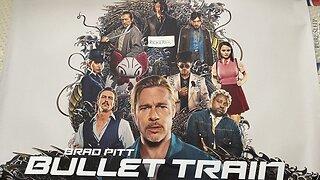 5:09
5:09
TheBlackfordBookClub
8 months ago"BULLET TRAIN" (2022) #bradpitt #kyoto #japan #movies #moviereview
10 -
 1:34:04
1:34:04
TeslaWirelessRadio
4 months agoGlorifying the American Girl (1929 Pre-Code Musical Comedy film)
71 -
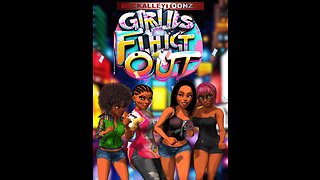 0:49
0:49
Backalleytoonz-Cartoons-4-grown-folks
11 months agoGirls Fight Out Videogame trailer
169 -
 1:43:01
1:43:01
VintageConnoisseur Presents
1 year agoSmash-Up The Story Of A Woman 1947 | Vintage Full Movies | Classic Drama Movies | Film Noir Movies
126 -
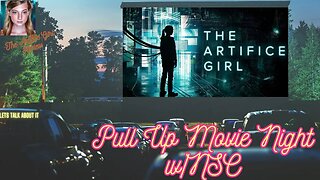 3:50:04
3:50:04
NotsoCommon
9 months agoThe Artifice Girl: A Live Movie Analysis
14 -
 9:12
9:12
viral12s
1 year agoScientist Transform Girls Into Dolls | Transformation & Switch body | Girl Next Movie Review
418 -
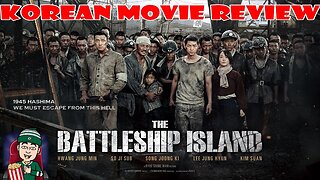 8:04
8:04
That SeventiesRockFan
10 months ago🎬 "The Battleship Island" Korean Movie Review 🚢💣 | Unforgettable Historical Drama!
21 -
 2:12:59
2:12:59
ElPadrino13
9 months agoKiller Klowns From Outer Space (1988) Retro Movie Review
10 -
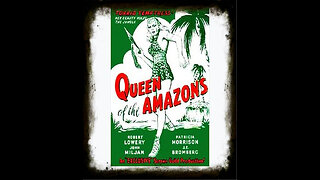 1:00:14
1:00:14
VintageConnoisseur Presents
11 months agoQueens Of The Amazons 1947 | Classic Adventure Drama| Vintage Full Movies | Action Drama
166 -
 2:02:37
2:02:37
That SeventiesRockFan
5 months agoCannon Film Club - Cobra! 🐍
2011